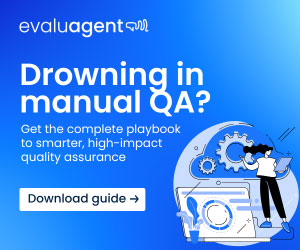Chris O’Brien at Cyara looks at why customers claim to love self-service, but loathe IVRs.
Designing optimal IVR journeys can help you strike a balance between call containment and CX goals.
Organizations are transforming the customer experience (CX) in real time. They’re rolling out new products and services to align with consumers’ new digital-first behaviors and meeting surging demand for support. In fact, 51 percent of businesses have integrated online and offline channels and embraced new channels for customer interactions.
That’s probably wise, given that many customers have been giving companies lower marks on their CX: Just 26 percent of consumers said their providers delivered an exceptional CX in 2021, down four points from just two years ago.
Most organizations now offer omnichannel support that includes such self-service options as interactive voice response (IVR) systems, knowledge bases, FAQs, chatbots, and other options, in addition to agent-guided interactions.
Increasingly customers prefer to try self-service before escalating their concerns. Some 69 percent of customers prefer to solve as many issues as possible on their own. In addition, customers may switch among channels or use multiple channels at once.
For example, customers may simultaneously surf a knowledge base on a computer, initiate a chat on a mobile phone, and use a landline to call a contact centre, playing the odds on which channel will help them solve their problems faster.
The Role of IVR in Delivering Good CX
IVR is a technology that’s been around since the 1970s, and is still in use due to its incredible effectiveness.
IVR can be used for both inbound and outbound calling and allows companies to gather information from customers; facilitate self-service; and deflect, or contain, calls that would otherwise go to an agent. As a result, CFOs love it.
A recent survey found that customer calls cost contact centres a median average of $5.50, whereas IVR responses cost 40 to 60 cents.
When IVR works well, it helps everyone. Customers can handle routine service inquiries, such as checking balances and making payments. They benefit with a fast service interaction, while contact centres are able to reduce agent call volumes.
And when customers need a live agent, IVR gathers important information, such as caller names, account issues, and problem details. This process allows agents to personalize the experience and speed up problem resolution.
When IVR doesn’t work well, however, it can seriously deteriorate the CX. Some common challenges include lengthy narrated introductions, too many options, poorly organized information – and the list goes on.
Sometimes companies try to contain too many calls, by making customers navigate long journeys with multiple options, which leads to customer frustration and anger.
As a result, many customers just don’t like IVRs. Some 67% of customers agree or strongly agree that they abandon telephony self-service because it does not offer the functionality that they need to solve their issues.
An impressive 72 percent frequently or always turn to a live agent. Those actions, of course, defeat companies’ goals for containing calls and achieving desired cost savings.
The Key to Successful IVRs? Transforming Traditional Processes
So, how can companies use IVR to engage customers properly, meet their needs, and deliver an exceptional experience? The answer is to design the right call journey that meets customer needs — and then automate testing to identify and address any issues.
Designing and testing IVR call paths has typically been a challenging manual process. CX designers have to anticipate the reasons customers call, group these requests in intuitive categories, and keep menu options and narration short and to-the-point.
They may create hundreds or even thousands of paths that customers follow in contact centre systems. Then, testers have to physically chart each call path to see where customers may trip up. It’s not surprising that this process is slow, costly, and error-prone.
Design Better IVR Paths and Automate Testing
There’s a better way to optimize the use of IVR at your organization: design the ideal IVR customer journeys, use automation to build and test them, and commit to continuous process improvement.
In one real-world example of these benefits in action, Vodafone New Zealand was experiencing IVR downtime that was harming its CX and reputation.
The company’s monitoring technology did not allow Vodafone to detect when, where, and why errors were coming. As a result, operations teams were often unaware outages were occurring until they were reported by customers.
By deploying automated IVR testing, Vodafone was able to gain clear visibility into the performance of all of its CX systems. As a result, operations teams were able to proactively identify and solve issues, minimizing their impact on Vodafone’s customer base.
The company saved countless hours by automating and speeding up time-consuming processes. IT proactively tested and monitored 100 percent of its networks and improved the reputation of its security operations centre.
“If you are serious about customer experience, if you’re serious about proactive monitoring, then Cyara is the solution for you,” says Phillip Moore, Operations and OSS Manager, Vodafone NZ.
Create IVR Experiences that Appeal to Digital Self-Service Seekers
IVR is an important part of the customer contact landscape, and its use will increase as companies expand self-service capabilities. However, many IVR programs currently aren’t delivering the ROI companies expect and are actively harming the CX by providing poor support.
There’s a better way to deploy, monitor, and manage your IVR journeys to achieve your business and CX goals.
Your teams can use Cyara’s Automated CX Assurance Platform to deliver a great CX at scale. You’ll be able to automate all IVR testing and monitoring with a single solution, as well as decrease testing times and cost while reaping greater ROI on your investments.
And you’ll be able to eliminate error-ridden manual processes and system downtime that could lead to poor satisfaction scores and customer defection to competitors.
Author: Guest Author
Published On: 17th Jun 2022
Read more about - Guest Blogs, Cyara





































